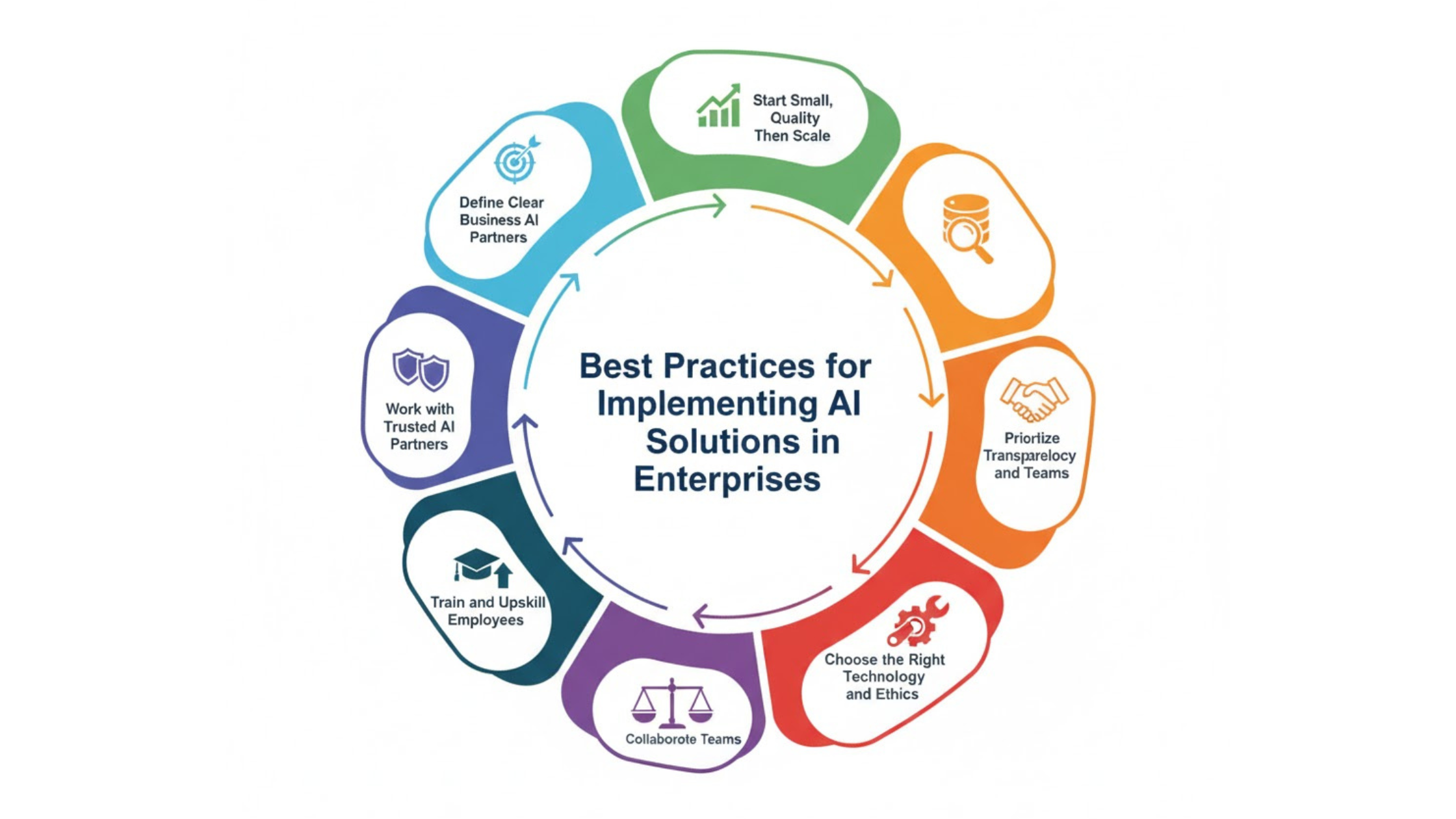Artificial Intelligence (AI) is one of the factors of business innovation. Automation of operations, enhancement of decision-making, and other processes are transforming the way businesses are conducted. However, it takes more than high-tech to be implemented successfully. It involves the correct attitude, planning and strategy.
Now, we are going to discuss some of the best practices that would assist enterprises to implement AI solutions successfully and obtaining sustainable outcomes.
Define Clear Business Goals
It is worth knowing what you want to accomplish before implementing AI. Most businesses dive in AI projects without a clear purpose and the result is the wastage of time and resources. Begin by defining the concrete tasks that AI is able to complete- can it be used to enhance customer service, forecast sales, or make operations more efficient? Specific objectives enable the process of AI development to be oriented toward business priorities and guarantee the achievement of tangible results.
Start Small, Then Scale
AI is potentially a risky project to launch on a scale. You can, however, start with a small pilot project to test out your idea. In this way you can check the performance of the model, and any possible problems and rectify them before a complete roll out. When the pilot succeeds then scale it out slowly through departments or processes.
AI systems learn from data. Inaccurate insights and faulty findings may be caused by bad or unreliable data. Pay attention to gathering clean, applicable, and current information. Establish the policies of data governance that determine the storage, accessibility, and usage of data. The better the data base, the better the AI results.
Collaborate Across Teams
The implementation of AI will be most effective when departments work together. Assemble IT, operations, marketing and others to exchange experiences and issues. The cross-functional communication will make sure that AI solution is applicable to the real business requirements and will be accepted by all.
Select the Appropriate Technology and Tools.
The choice of the appropriate AI framework or toolset can result in a significant difference. Businesses ought to think of the ones that are compatible with their current systems and capabilities. Flexibility can be provided with the help of open-source tools, and AI platforms on the cloud can assist in scaling. This is always to be compatible and secure before adoption.
Emphasize on Transparency and Ethics.
The decisions made by AI may have an impact on customers, employees, and stakeholders. Building trust is crucial. The use of AI in a business should be transparent and guided by ethical principles to avoid prejudice and abuse of data. The explainable AI (XAI) models enable users to see how AI arrives at the decisions and hence hold the process of decision-making accountable and fair.
Train and Upskill Employees
AI does not deny people their power–it gives them more power. Conduct training sessions to give workers knowledge on how to use AI tools. Promote analytical and technical capabilities of the teams. In case the employees are sure they can use AI, the productivity and innovation emerges automatically.
Monitor, Measure, and Improve
AI systems also need periodic review in order to remain useful. Measure performance in terms of accuracy, efficiency, and customer satisfaction. Feedback on how the model works should be used to improve the performance of the model in the long run. Ongoing observation will make sure your AI solutions remain consistent with the business objectives.
Collaborate with Reliable Artificial Intelligence Partners.
In case your business does not have the necessary resources of expertise in AI, you can think about collaborating with specialists in this field. They will be able to lead your organization in the development, testing and deployment stages. Having partners with experience might assist you in aiding you to resolve the typical pitfalls as well as expedite the projects.
Conclusion
The process of introducing AI solutions to enterprises is one that is to be undertaken strategically, in a collaborative manner, and in a continuous way. Business can discover the full potential of AI by beginning small, with clean data, embracing transparency, and training teams.
When designed with the right practices, AI is not simply another tool, but a reliable companion that leads to smarter decisions and growth that is sustainable.



